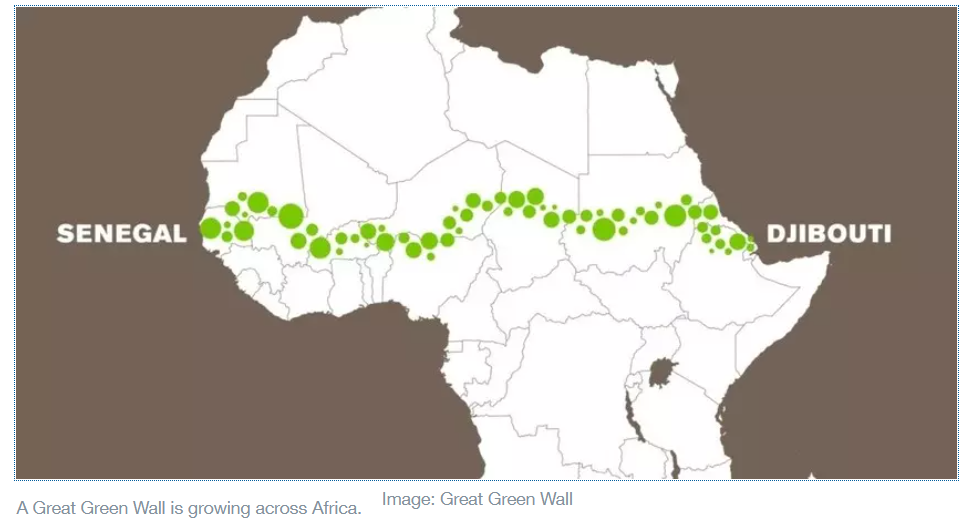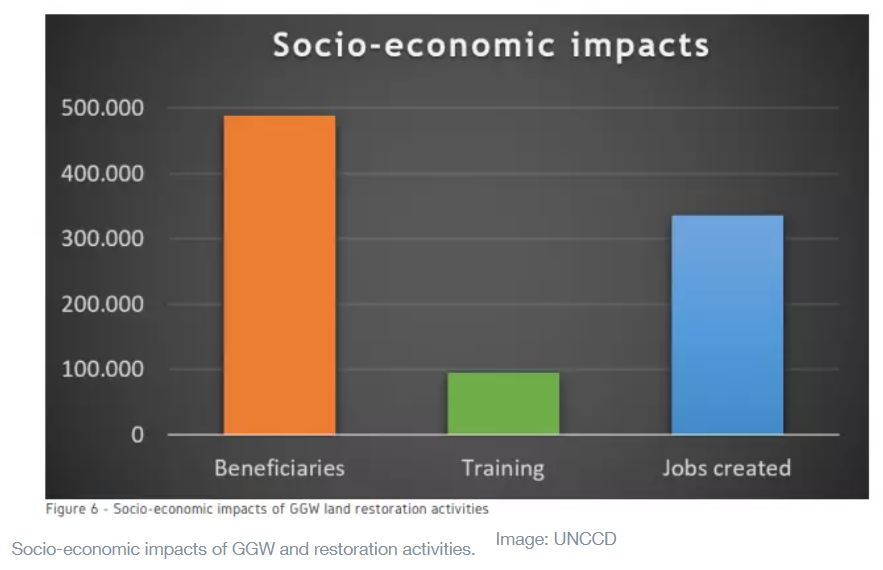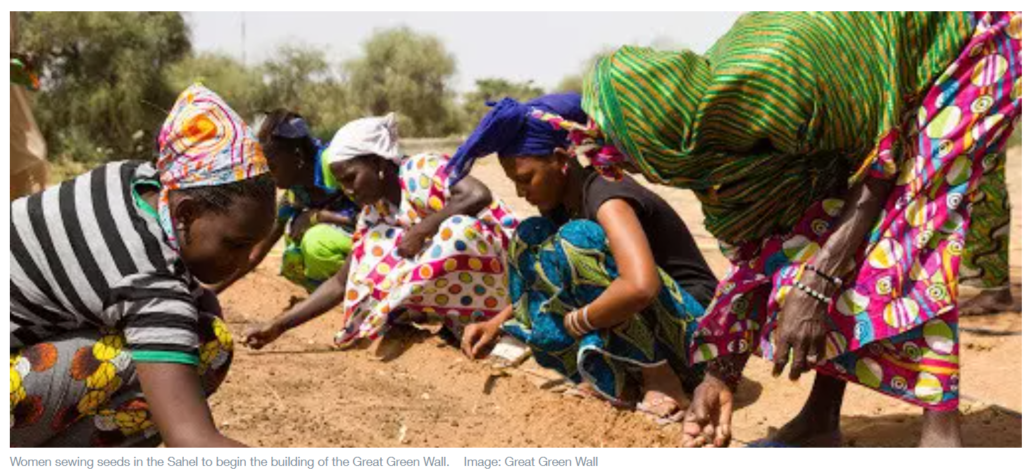- The Great Green Wall initiative aims to restore an 8,000km strip of savanna along the southern edge of the Sahara desert.
- 100 million hectares of land are to be restored, 10 million jobs created and 250 megatonnes of carbon sequestered.
- The initiative has just received a funding boost from donors including France and the World Bank to help achieve its goals by 2030.
Green is not the first colour you typically associate with the arid Sahel region in Africa. But a pan-regional initiative could change this significantly by 2030, following a pledge for new funding of more than $14 billion.
Stretching coast-to-coast from Senegal to Djibouti, the Great Green Wall is aiming to regenerate one of the region’s most seriously affected by land degradation and desertification in the world.
It’s hoped the completed Wall would be a new Wonder of the World – overtaking the Great Barrier Reef to be the largest living structure on Earth.

The semi-arid Sahel, between the dry Sahara to the north and the belt of humid savannas to the south, suffers from recurrent droughts, lack of rainfall and deteriorating soil quality and biodiversity. Disease outbreaks, food, water and energy insecurities impede its development significantly.
Growing a green belt across Africa
These are set against the ramifications of geopolitical conflict in the region and an expected tripling of its population to more than 1.5 billion before the end of the century, the FT reports based on UN estimates.
Addressing these challenges is the goal of the Great Green Wall for the Sahara and Sahel Initiative (GGW), which launched in 2007.
It aims to restore and sustainably manage an 8,000km strip of savanna, including trees, grasslands, vegetation and plants, along the southern edge of the Sahara desert.
Along with restoring 100 million hectares of land and creating 10 million jobs in rural areas, the GGW vision for 2030 also includes sequestering 250 megatonnes of carbon, so the region can play its part in meeting global climate goals.
As Ibrahim Thiaw, the Executive Secretary of the UN Convention to Combat Desertification (UNCCD), told the World Economic Forum during Davos Agenda Week: “Anytime you restore land, you actually have it as a carbon sink. And it turns out that land is the largest carbon sink that we have right now on Earth.”
Making progress with land restoration
Progress so far has been slow, with the UN reporting last year that the initiative had only covered 16% of its target area. But it has already benefited close to 500,000 people, both through training and job creation.
In Ethiopia, 15 million hectares of land have been restored, while in Senegal, 12 million drought-resistant trees have been planted in less than a decade.

In January 2021, the project received a pledge for new funding from donors including the African Development Bank, the government of France and the World Bank.
The Great Green Wall Accelerator announced at the One Planet Summit for biodiversity will cover around 30% of the $33 billion needed for the GGW to meet its 2030 goals.
In 2020, the project received a cultural boost, when Malian musician Inna Modja and Oscar-nominated director Fernando Meirelles made a documentary about its ambition.
Given the expected population growth, putting the region on a more secure, equitable and sustainable footing is an opportunity not to be missed, according to Ibrahim Thiaw, the Executive Secretary of the UNCCD.
“There is room for public and private investments, there is room for large investors, there is room for small shareholders,” he told the Davos Agenda.
He added that securing the necessary funding for GGW will create opportunities for people “to stay home, to do business at home, to grow at home, to actually enjoy living with their families”, addressing pressing geopolitical issues including migration.
To support these efforts, 1t.org and UpLink have recently launched the Trillion Trees Challenge: the Sahel & the Great Green Wall. The Challenge is calling for successful and innovative restoration projects that contribute to the vision of the Great Green Wall Initiative and deliver sustainable development impact in the Sahel.Volume 90%
Article Credit: weforum.org
